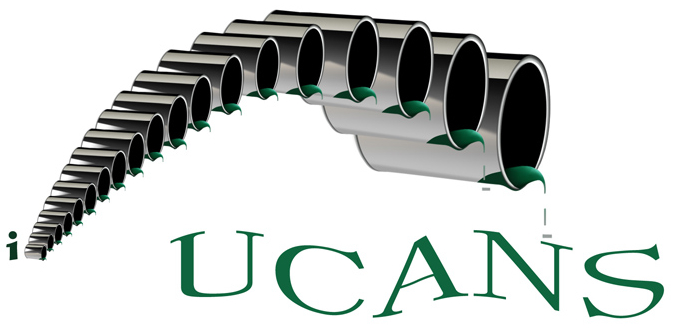
|
The Official Web Page of Union for Compact Accelerator-driven Neutron Sources (UCANS) |
UCANS-0
Meeting Report (Mar 19, 2010 by Chung K. Loong)
An Interim Discussion of Small Neutron Sources
Recent Progress and Ongoing Development
- Date: March 13, 2010
- Place: Hotel Allegra, Kloten, Switzerland
- In attendance:
- David BAXTER (Indiana U, USA)
- Jack CARPENTER (Argonne, USA)
- Katsuya HIROTA (RIKEN, Japan)
- Tuchen HUANG (Tsinghua U, China)
- Yoshihisa IWASHITA (Kyoto U, Japan)
- Yoshiaki KIYANAGI (Hokkaido U, Japan)
- Wenqian LI (Tsinghua U, China)
- Chun LOONG (Tsinghua U, China)
- Beibei SHAO (Tsinghua U, China)
- Hirohiko M. SHIMIZU (KEK, Japan)
- Paul SOKOL (Indiana U, USA)
- Juzhou TAO (IHEP-CAS, China)
- Yang TIAN (Tsinghua U, China)
- Zhi ZENG (Tsinghua U, China)
- Bin ZHONG (Tsinghua U, China)
- Kun ZHU (Peking U, China)
Objectives and Attendants
This small international meeting, organized by Tsinghua University, was to invite a group of neutron scientists, after their attending the ICANS-XIX Meeting, for a mini-review of the Compact Pulsed Neutron Source (CPHS) Project and an interim discussion of recent development of accelerator-driven small neutron sources in the world. The attendants of this meeting came from the world’s four compact accelerator-drive neutron sources—LENS, Hokkaido linac facility, CPHS, and the neutron radiography facility of Peking University, currently either in operation or under construction, and other laboratories/universities within an extensive collaborative.Overall Observations
- 2-1. Attendants from Indiana University, Argonne National Lab, Hokkaido University, Kyoto University, KEK, and RIKEN (a seven-member Committee, see attendant list above) were invited to review the design, engineering, and future plan of the CPHS Project. They heard a presentation of an update since the Workshop in June 2009, which includes the floor plan and facility layout, team organization and assignments, roadmap, and immediate priorities. Team members also presented brief summaries of the target-reflector-moderator (TRM), shielding and radiation safety, and instrumentation (SANS, imaging & He-3 detectors) activities. The Committee will send a report of this mini-review to Jie Wei, the CPHS Director.
- 2-2. Sokol and Baxter presented the status of the LENS’ target problems and the plan of testing a newly designed target. Testing will start as soon as the fabrication of the new target module is completed.
- 2-3. Kiyanagi presented the recent progress of energy-dependent imaging at the Hokkaido linac facility in studying stress distribution in crystalline materials (e.g., welds) and analyzing elemental composition.
- 2-4. Iwashita promoted the idea of establishing a number of small neutron sources at universities through which pilot experiments and instrumentation R&D can be conducted by students and potential users, thereby supporting more effectively large facilities such as the J-PARC. University of Kyoto has received funding to purchase a proton accelerator for the preparation of building a small neutron source.
- 2-5. Hirota reported the plan of building an imaging instrument to be used at a small neutron source. He projected, by means of advanced software and hardware methodology, such instruments can find a niche in applied research in spite of the lower neutron flux at small sources.
- 2-6. Shimizu reported KEK’s recent disposition to network small neutron source projects in Asia. Although the exact complementarity between the proposed small-source network and the big facilities has yet to be worked out, the general direction is favorable to compact accelerator-based neutron/proton sources.
Recommendation and Action Items
Collectively, the participants felt, based on the ICANS-XIX experience, that it will be difficult for small neutron sources individually to attract prompt attention within the pulsed-source neutron community mainly because the dominating ICANS members of big facilities, i.e., SNS, J-PARC, ISIS, LANSCE, and ESS, have already a full agenda of collaboration. However, in view of the imminent commissioning and construction of and upsurging interests in small sources, there is an urgent need for close communication and strong collaboration among the small neutron sources and the associated institutes so that accelerator and neutronic technologies as well as instrumentation developments specific to small sources can be advanced at a maximal efficiency. The following action items were proposed.- 3-1. Immediate establishment of the ‘UCANS—Union of Compact Accelerator-driven Neutron Sources’, following the experiences of ICANS. Presumably, the initial UCANS members are: CPHS-Tsinghua U (Wei), Hokkaido U (Kiyanagi), KEK (Shimizu), Kyoto U (Iwashita), LENS (Sokol), Peaking U (ZY Guo), and RIKEN (Hirota). Jack Carpenter is to be the ‘spokesperson/advocate’ of UCANS.
- 3-2. Organization of the First Meeting—UCANS-I, to be hosted by Tsinghua University and held in Beijing, China during the week of August 15, 2010. UCANS Meetings will be smaller but more frequent than the ICANS Meetings. We do not anticipate any conflict between ICANS and UCANS.
- 3-3. Construction of a website to promote the concept and objective of UCANS and to solicit participation and interaction through a public forum.
- 3-4. Canvass of worldwide interests in small neutron sources, starting with inquiries of potential UCANS involvement by the University of Michigan, Tsinghua University-Shinju, Taiwan, and in Spain.